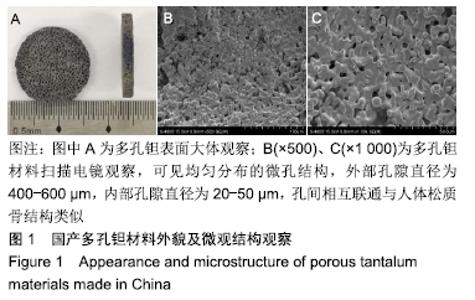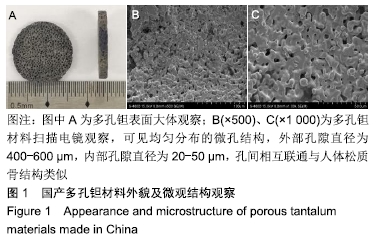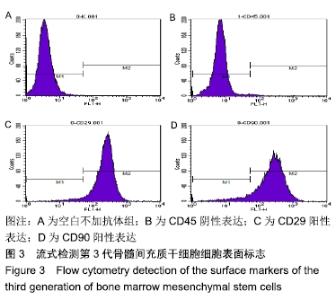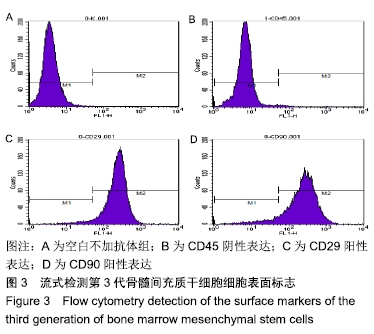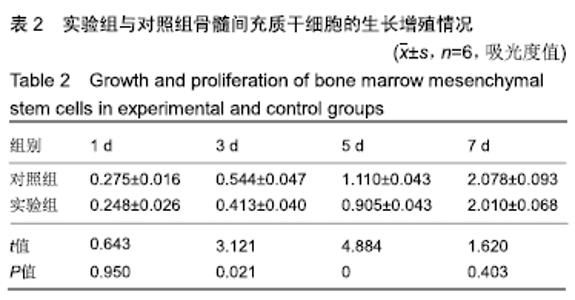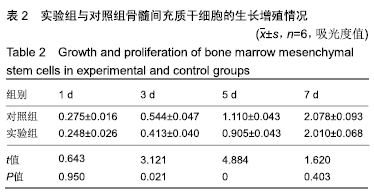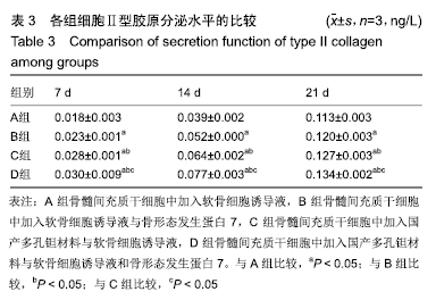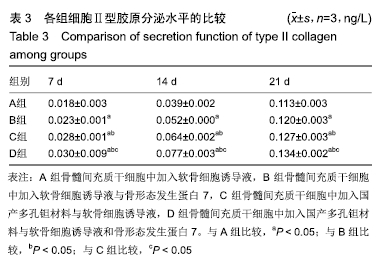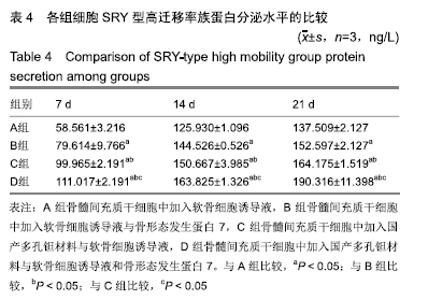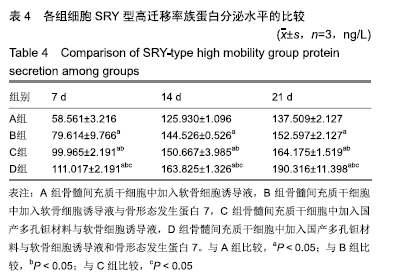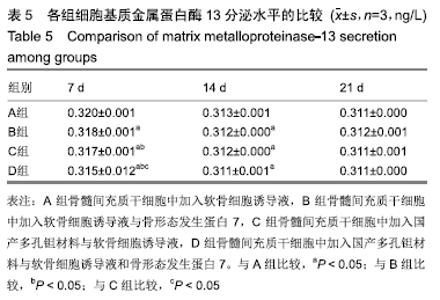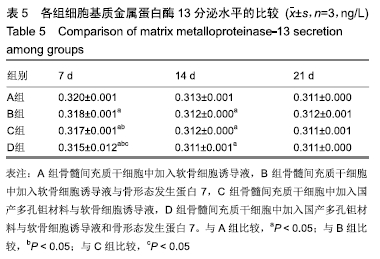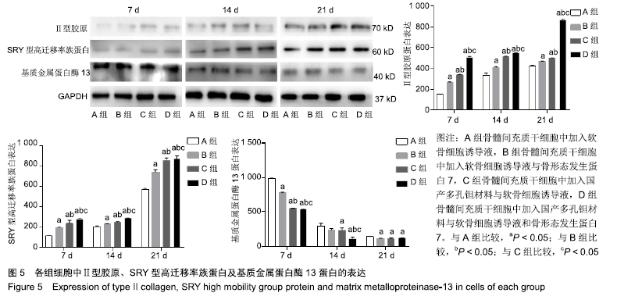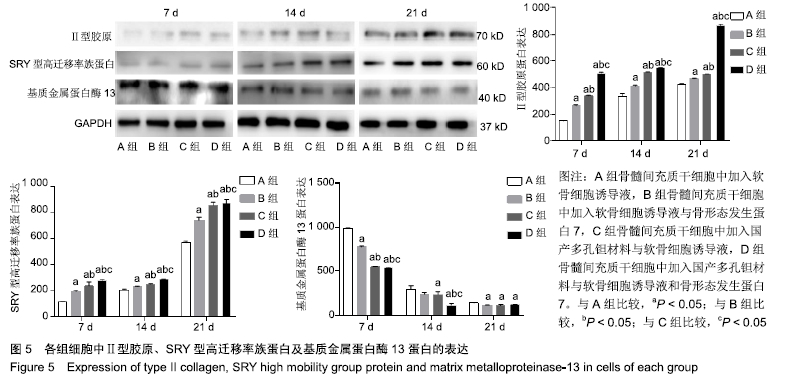[1] BERMUDEZ MD, CARRION FJ, MARTINEZ NG, et al. Erosion-corrosion of stainless steels, titanium,tantalum and zirconium. Wear.2005;258(1-4):693-700.
[2] 李琪佳,王茜,甘洪全,等.多孔钽材料细胞毒性、生物相容性及体内成骨性研究[J].中华骨科杂志,2014,34(9):954-961.
[3] WAUTHLE R, VAND SJ, AMIN YS, et al. Additively manufactured porous tantalum implants. Acta Biomater.2015;14:217-225.
[4] 张辉,李亮,王茜,等.骨形成蛋白-7对多孔钽/软骨细胞复合物分泌功能以及Col-Ⅱ、AGG和Sox9基因表达的影响[J].北京大学学报(医学版), 2015, 47(2):219-225.
[5] WANG Q, ZHANG H, LI Q, et al.Biocompatibility and osteogenic properties of porous tantalum.Exp Ther Med.2015;9(3):780-786.
[6] 董志红,李玉宝,张利,等.软骨修复用HA/PU多孔支架材料的制备与表征[J].无机材料学报,2007, 22(6):1255-1258.
[7] 卫旭东,党源,胡德庆.间充质干细胞在软骨损伤修复中的研究进展[J].中华细胞与干细胞杂志(电子版),2017,7(3):178-184.
[8] LIU X, BAO C, XU HHK, et al.Osteoprotegerin gene-modified BMSCs with hydroxyapatite scaffold for treating critical-sized mandibular defects in ovariectomized osteoporotic rats.Acta Biomater.2016;42:378-388.
[9] JO CH, LEE YG, SHIN WH, et al.Intra-articular injection of mesenchymal stem cells for the treatment of osteoarthritis of the knee: a proof-of-concept clinical trial.Stem Cells.2014; 32(5):1254-1266.
[10] 张琢,吴雪莹,徐天华,等.维持性血液透析30例血清骨形成蛋白7与腹主动脉钙化相关性研究[J].中国实用内科杂志,2018,38(12):55-58.
[11] SAITO E, SUAREZ-GONZALEZ D, MURPHY WL, et al.Biomineral Coating Increases Bone Formation by Ex Vivo BMP-7 Gene Therapy in Rapid Prototyped Poly(\r, l\r, -lactic acid) (PLLA) and Poly(ε-caprolactone) (PCL) Porous Scaffolds. Adv Healthcare Mater.2015;4(4):621-632.
[12] 张辉,王茜,甘洪全,等.多孔钽复合BMP-7修复兔软骨及软骨下骨缺损的实验研究[J].中国修复重建外科杂志,2016,30(7):836-842.
[13] 张辉,王茜,陶建峰,等.国产多孔钽复合骨形态发生蛋白7植入兔竖脊肌内的生物相容性[J].中国组织工程研究,2016,20(16):2376-2383.
[14] BAI X, LI G, ZHAO C, et al.BMP-7 induces the differentiation of bone marrow-derived mesenchymal cells into chondrocytes.Med Biol Eng Comput.2011;49(6):687-692.
[15] PENG XB, ZHANG Y, WANG YQ, et al.IGF-1 and BMP-7 synergistically stimulate articular cartilage repairing in the rabbit knees by improving chondrogenic differentiation of bone-marrow mesenchymal stem cells.J Cell Biochem.2019;120:5570-5582.
[16] YAN X, ZHOU Z, GUO L, et al.BMP7-overexpressing bone marrow- derived mesenchymal stem cells (BMSCs) are more effective than wild- type BMSCs in healing fractures.Exp Ther Med. 2018;16:1381-1388.
[17] 范凯健,吴菁,李钦,等.基质金属蛋白酶13在软骨重塑和关节炎中的研究进展[J].中国药理学通报,2018,34(5):607-611.
[18] ZHANG X, WU S, NACCARATO T, et al.Regeneration of hyaline-like cartilage in situ with SOX9 stimulation of bone marrow-derived mesenchymal stem cells.PloS One.2017;12(6):180-183.
[19] 王浩,陈森,马雨洪,等.微小RNA-23a调控大鼠骨髓间充质干细胞成软骨分化的实验研究[J].武汉大学学报(医学版),2014,35(4):493-497.
[20] 张岭,李琪佳,赵季华,等.医用多孔钽材料复合大鼠软骨细胞的生长特性及功能变化[J].解放军医学杂志,2014,39(6):464-469.
[21] 邬波,马旭,朱大木,等.胰岛素样生长因子1对骨髓间充质干细胞软骨分化及基质金属蛋白酶表达的影响[J].中国组织工程研究, 2013,17(19): 3421-3429.
[22] 孙俊魁.调控VEGF与Notch信号通路对胎盘间充质干细胞修复骨关节炎软骨缺损的实验研究[D].郑州:郑州大学,2016.
[23] LEE YW, WANG B.Cartilage repair by mesenchymal stem cells: Clinical trial update and perspectives.J Orthop Translat.2017;9:76-88.
[24] VARMA MJ, BREULS RG, SCHOUTEN TE, et al.Pheno-typical and functional characterization of freshly isola-ted adipose tissue-derived stem cells.Stem Cells Dev.2007;16:91-104.
[25] ZHANG S, LIU Y, DERAKHSHANFAR S, et al.Soroosh Derakhshanfar et al.Polymer Self-Assembled BMSCs with Cancer Tropism and Programmed Homing.Adv Healthc Mater.2018;1800118:1-10.
[26] TANG Z, XIE Y, YANG F, et al.Porous Tantalum Coatings Prepared by Vacuum Plasma Spraying Enhance BMSCs Osteogenic Differentiation and Bone Regeneration In Vitro and In Vivo.PloS One.2013;8(6): 66263.
[27] LIU PC, LIU K, LIU JF, et al.Transfection of the IHH gene into rabbit BMSCs in a simulated microgravity environment promotes chondrogenic differentiation and inhibits cartilage aging. Oncotarget. 2016;7(39):62873-62885.
[28] MUSIC E, FUTREGA K, DORAN MR.Sheep as a model for evaluating mesenchymal stem/stromal cell (MSC)-based chondral defect repair. Osteoarthritis Cartilage.2018;3:1-11.
[29] WANG X, LI Y, HAN R, et al.Demineralized bone matrix combined bone marrow mesenchymal stem cells, bone morphogenetic protein-2 and transforming growth factor-β3 gene promoted pig cartilage defect repair.PloS One.2014; 9(12):e116061.
[30] SCHULZ RM, ZSCHARNACK M, HANISCH I, et al.Cartilage tissue engineering by collagen matrix associated bone marrow derived mesenchymal stem cells.Bio Med Mater Eng.2008;18:S55e70.
[31] BRIGAUD I, AGNIEL R, LEROY-DUDAL J, et al.Synergistic effects of BMP-2, BMP-6 or BMP-7 with human plasma fibronectin onto hydroxyapatite coatings: A comparative study.Acta Biomaterialia. 2017;55:481-492.
[32] LONGOBARDI L, GRANERO-MOLTÓ F, O'REAR L, et al.Subcellular localization of IRS-1 in IGF-I-mediated chondrogenic proliferation, differentiation and hypertrophy of bone marrow mesenchymal stem cells. Growth Factors.2009; 27(5):309-320.
[33] 蔡林奕,孔祥丽,谢静.体外持续传代引起小鼠透明软骨细胞表型和细胞外基质平衡变化的研究[J]. 华西口腔医学杂志,2016,34(3):248-254.
[34] 陆继鹏,舒钧,熊鹰,等.软骨下骨刚度增加对关节软骨II型胶原和MMP-1表达的影响[J].国际骨科学杂志,2007,28(4):273-276.
[35] YAMASAKI S, MERA H, ITOKAZU M, et al.Cartilage Repair With Autologous Bone Marrow Mesenchymal Stem Cell Transplantation: Review of Preclinical and Clinical Studies.Cartilage.2014; 5(4): 196-202.
[36] HUNG R, FOSTER BK, XIAN CJ.The potential role of VEGF-induced vascularisation in the bony repair of injured growth plate cartilage.J Endocrinol.2014;221(1):63-75.
[37] NISHIMURA R, WAKABAYASHI M, HATA K, et al. Osterix regulates calcification and degradation of chondrogenic matrices through matrix metalloproteinase 13 (MMP13) expression in association with transcription factor Runx2 during endochondral ossification.J Biol Chem.2012; 287(40):33179-33190.
|
